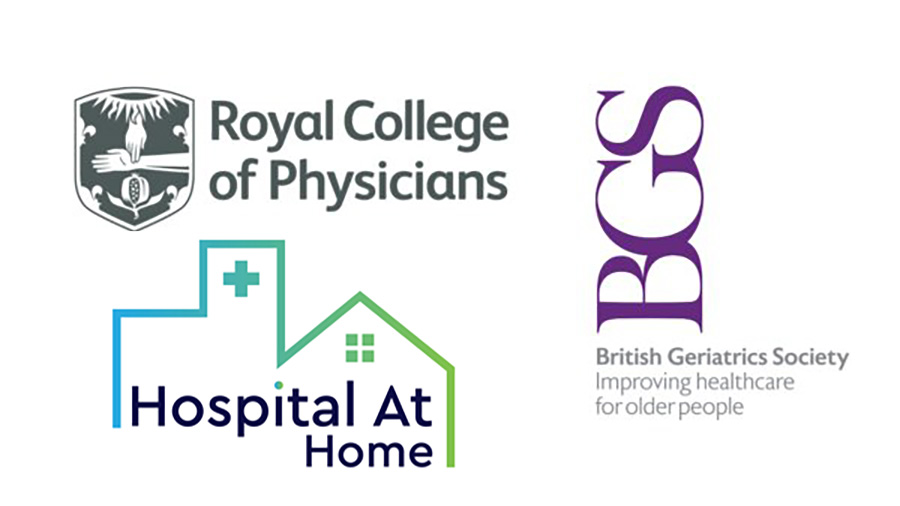Mikel Izquierdo, PhD. Full professor, Vice-Head of the Department of Health Sciences at the Public University of Navarra. Head of the Unit of Physical Exercise and Quality of Life at the Biomedical Research Centre of Navarra and Centre for Networked Biomedical Research on Frailty and Healthy Ageing (CIBERFES). He posts on X: @mikelizquierdo_
Imagine an older adult, Maria, who is thriving at home amidst her memories and routines. A sudden health crisis disrupts this, landing her in the hospital. What if, instead of a hospital stay, Maria could receive acute care at home while preserving her comfort and independence? Our recent review article published in Age and Ageing explores this possibility and its implications for maintaining functional and cognitive health in older people.
Hospitalisation: The Hidden Risk to Functional Capacity
Hospital-associated deconditioning, a rapid decline in muscle strength, mobility, and even cognitive function, affects almost 30% of older adults in the hospital. A significant portion of the problem results from immobility, which is often worsened by bed rest, limited mobility, and tethering to medical devices. This decline often leads to a reduced capacity to do activities of daily living, triggering a cascade of complications that extend well beyond the walls of the hospital.
Our review highlights that despite advances, standard hospital practices remain a contributing factor to functional decline. We synthesised evidence from thousands of studies, narrowing the focus to 27 key studies that compared different hospitalisation settings and exercise interventions. One question guided our exploration: Can we create
care environments that maintain or even enhance patients’ physical and cognitive wellbeing in the face of an acute illness?
Hospital at Home (HaH): A Model That Feels Like Home
Hospital at Home (HaH) brings acute care to a familiar environment: the patient’s own home. This model includes early supported discharge (ESD) for patients who start their recovery in the hospital and are quickly transitioned home, and admission avoidance (AA) for those who begin their care journey at home. Both approaches allow patients to stay active in familiar spaces, reducing the risks associated with traditional hospitalisation.
Our findings show that HaH may help improve functional and cognitive status outcomes. Studies show that older people cared for at home face less cognitive decline and have better mobility than those who remain in hospital wards. Maria’s story follows suit—with her at home, she was able to navigate her surroundings, interact with family, and stay engaged cognitively and physically.
The Role of Exercise: A Game-Changer in Acute Care
Exercise is commonly thought of as a preventative intervention; this analysis highlights its importance in the acute care context. For example, in-hospital supervised exercise programs that include progressive resistance strength training, balance, and mobility exercises improve patients’ physical performance and functional independence at discharge. Exercise programs during hospital stays moderately improved patients' ability to perform daily activities on their own. The measured improvement was statistically significant, showing meaningful moderate benefits compared to those who didn’t participate in such programs. In simple terms, patients who participated in these exercises were stronger and better able to take care of themselves when they left the hospital.
Although exercise programs are effective in hospitals, only one trial has investigated exercise interventions in HaHs. The results were encouraging, demonstrating remarkable improvements in balance, strength, and agility among participants. More studies are needed to better understand how exercise can be incorporated into HaH care successfully.
Why This Matters: A Call to Action for Clinicians and Policymakers
Our findings highlight the importance of rethinking how and where acute care should be delivered. There are practical actions healthcare professionals and policymakers can take:
- Advocate for Hospital at Home Programs: Support the establishment and funding of HaH models to deliver patient-centered, resource-effective care.
- Integrate Exercise Interventions: Implement tailored exercise programs for both hospital and HaH settings to mitigate functional decline.
- Focus Research on HaH Exercise Programs: Support studies to investigate the impact of exercise during home-based acute care to fill the evidence gaps.
Maria’s Hope: A Vision of Care That Preserves Autonomy
Maria’s journey might speak to a wider transformation in how we look after older adults during health emergencies. Rather than the austere environment of a hospital ward, HaH enables her to stay connected to daily life, assisted by medical professionals, and empowered through focused exercises. This model stands as a path toward preserving autonomy and dignity in the context of high-quality care.
Moving Forward
Let us focus on strategies that support older adults’ independence and functional ability, transforming crisis moments into opportunities for resilience and recovery.
Our evidence summary in Age and Ageing is more than an examination of evidence—it’s a tribute to the power of innovative care models like HaH and the life-changing potential of evidence-based exercise. Let’s redefine acute care to preserve the independence that older adults like Maria value.
Read the full article Comparison of Hospitalisation Settings and Exercise Interventions in Acute Care: A Systematic Review and Meta-Analysis on the Age and Ageing website.



